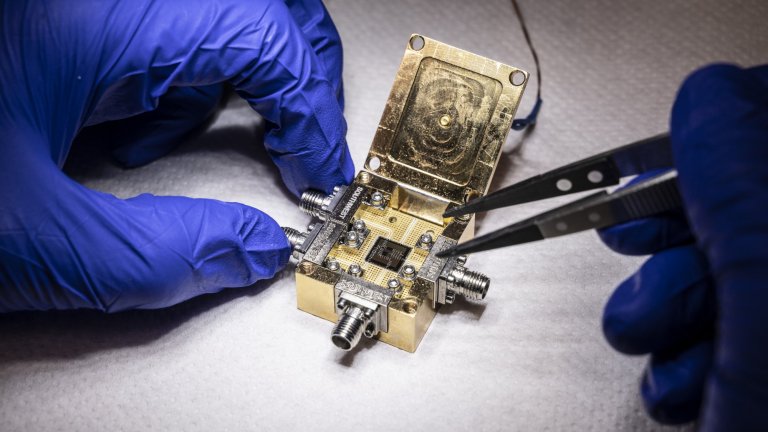
© Hubert RAGUET / Alice&Bob / LPENS / CNRS Images
View the mediaFolder
Since the 20th century, quantum physics has enabled a series of technological innovations that have revolutionised our daily lives (transistor, laser, etc.). Nowadays, research focuses on quantum computers, simulators and sensors as well as spintronics.

© Hubert RAGUET / Alice&Bob / LPENS / CNRS Images
View the mediaQuantum computers are attracting growing interest because of their revolutionary potential, particularly in computing. Our computers and smartphones process pieces of information one by one in the form of bits, a unit which has only two values, 0 or 1. Qubits, or quantum bits, unlike classical bits, can be both 0 and 1 at the same time. This is the quantum superposition phenomenon, which allows quantum computers to process vast amounts of information all at the same time. Qubits also play a crucial role in the transmission of secure information: quantum entanglement (interactions of qubits linked together) and one of its applications, quantum cryptography (transmission of tamper-proof data), can ensure absolute confidentiality.
Quantum simulators are being developed to simulate complex physical systems, such as quantum materials, as conventional computers are not currently unable to resolve the equation systems that govern these systems.
Quantum sensors, however, use quantum properties to improve the sensitivity and precision of sensing devices used in medicine, telecommunications, etc. Extremely sensitive qubits allow physical quantities to be measured with unparalleled accuracy, opening up new prospects in the field of medical imaging for example.
Finally, spintronics is a branch of physics that looks at how the intrinsic spin (quantum property) of electrons can be used to store, handle and send information. Spintronic devices include ultra-dense magnetic data storage devices and quantum transistors.
Discover through images the extent of the research being done in quantum physics in CNRS laboratories.
Keywords: quantum physics, atoms, quantum mechanics, spintronics, quantum sensors, quantum simulators, quantum computers, qubits, quantum computing, spintronics
Our work is guided by the way scientists question the world around them and we translate their research into images to help people to understand the world better and to awaken their curiosity and wonderment.